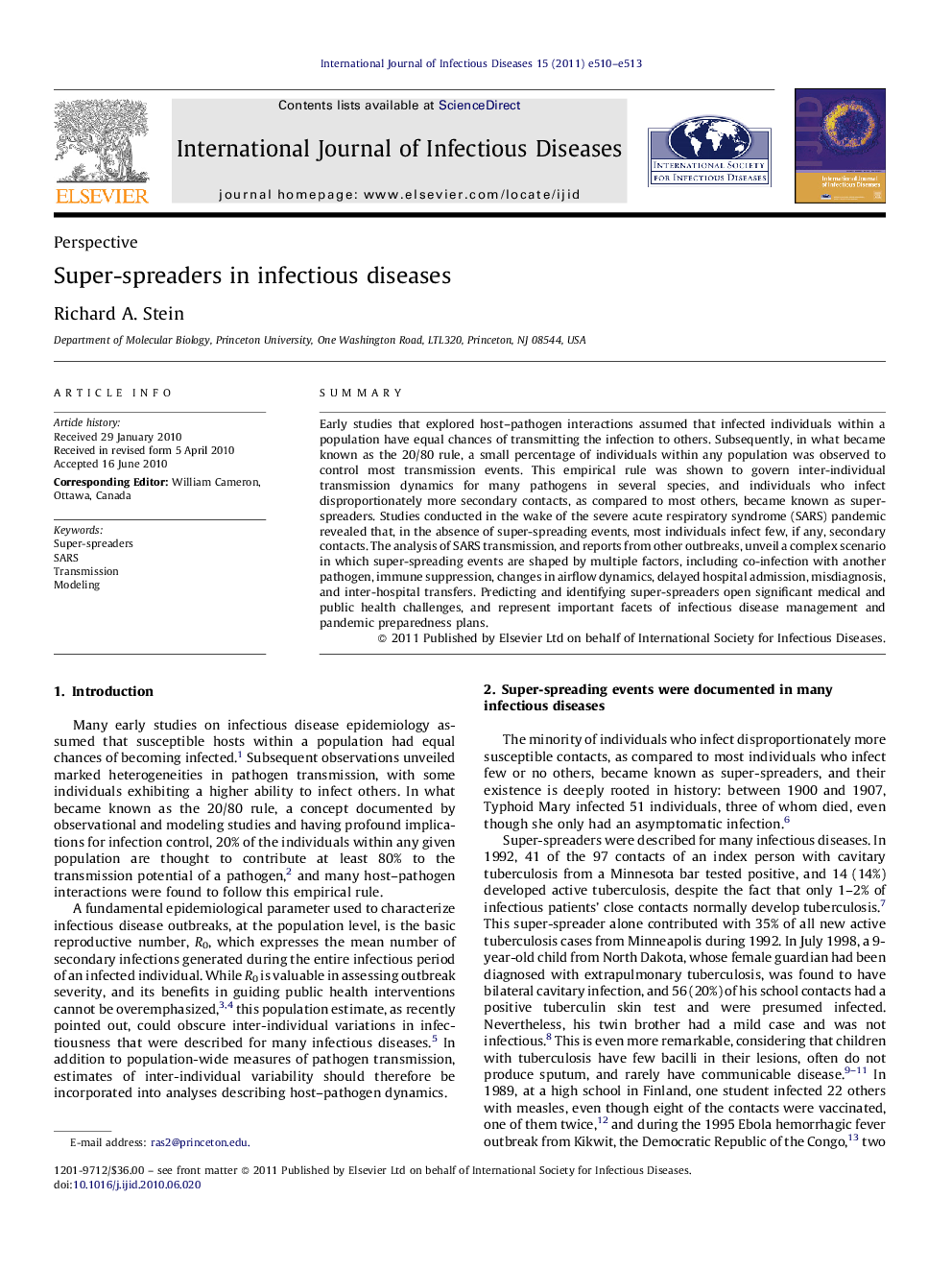| Article ID | Journal | Published Year | Pages | File Type |
|---|---|---|---|---|
| 3363938 | International Journal of Infectious Diseases | 2011 | 4 Pages |
SummaryEarly studies that explored host–pathogen interactions assumed that infected individuals within a population have equal chances of transmitting the infection to others. Subsequently, in what became known as the 20/80 rule, a small percentage of individuals within any population was observed to control most transmission events. This empirical rule was shown to govern inter-individual transmission dynamics for many pathogens in several species, and individuals who infect disproportionately more secondary contacts, as compared to most others, became known as super-spreaders. Studies conducted in the wake of the severe acute respiratory syndrome (SARS) pandemic revealed that, in the absence of super-spreading events, most individuals infect few, if any, secondary contacts. The analysis of SARS transmission, and reports from other outbreaks, unveil a complex scenario in which super-spreading events are shaped by multiple factors, including co-infection with another pathogen, immune suppression, changes in airflow dynamics, delayed hospital admission, misdiagnosis, and inter-hospital transfers. Predicting and identifying super-spreaders open significant medical and public health challenges, and represent important facets of infectious disease management and pandemic preparedness plans.
